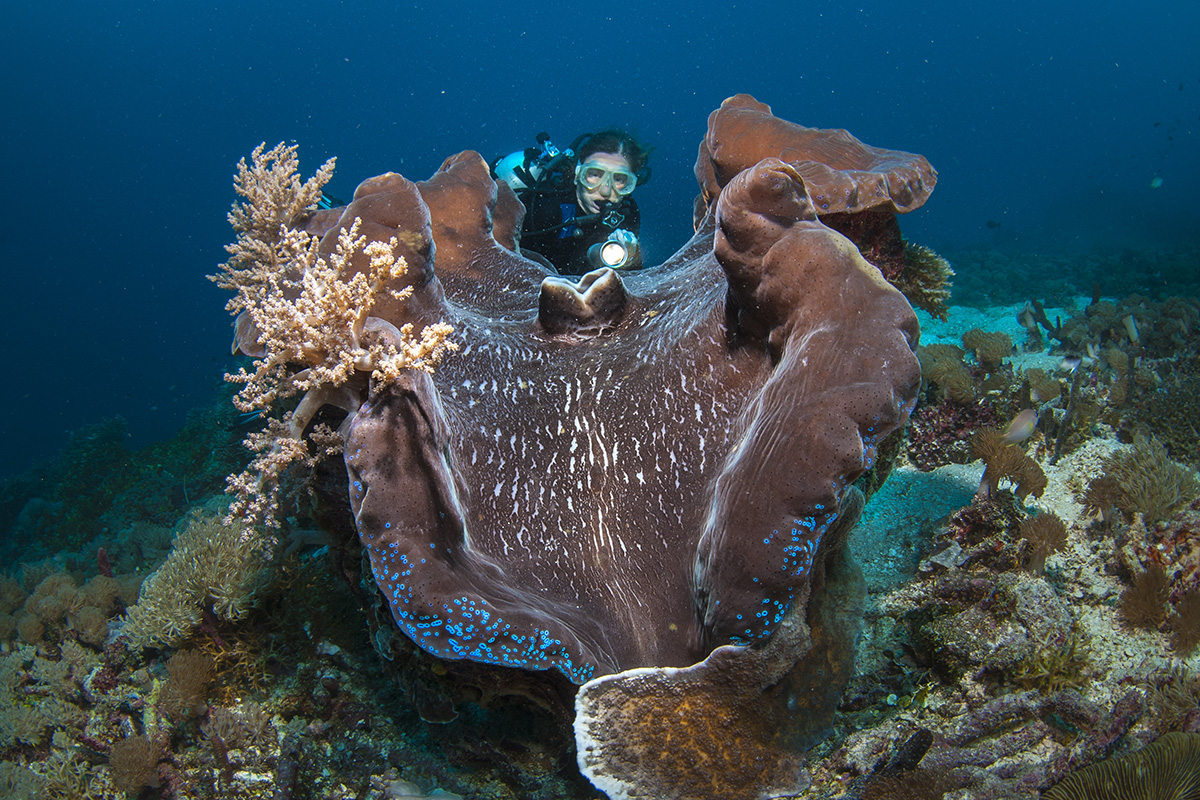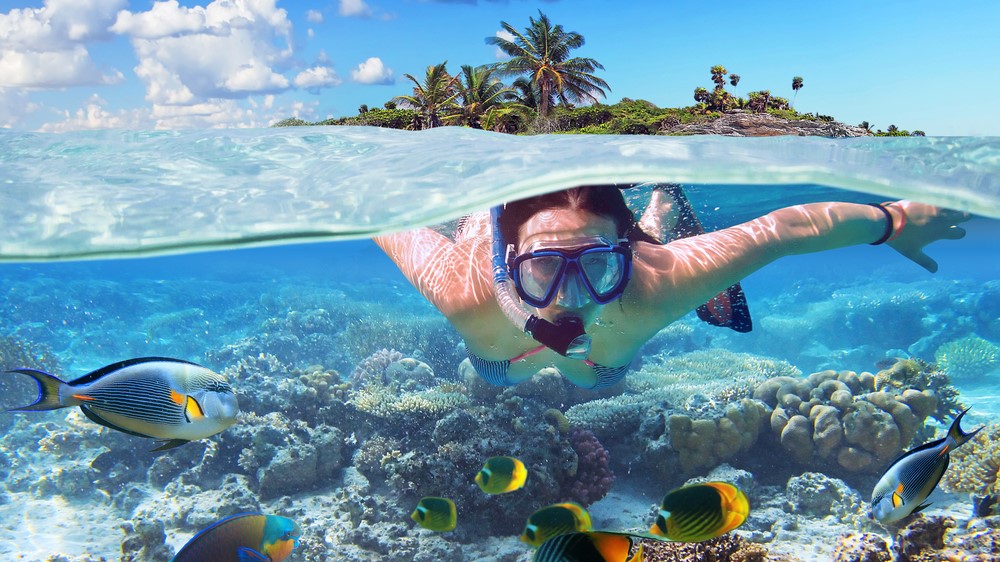
The Magic of Raja Ampat: A Diving Adventure in Indonesia’s Sea Paradise
Imagine a place where turquoise waters meet lush green islands, where colorful coral reefs teem with marine life, and where the sounds of nature are as vast and peaceful as the horizon itself. Welcome to Raja Ampat, one of the world’s most breathtaking and untouched diving paradises, located in the Coral Triangle in Indonesia. This cluster of islands, part of Papua Province, is renowned not only for its staggering natural beauty but also for its incredible biodiversity, which makes it one of the most sought-after destinations for divers and ocean lovers from around the globe.
Raja Ampat is often described as a paradise beneath the waves, and for good reason. With more than 1,300 islands, a kaleidoscope of corals, and an astonishing variety of fish species, it’s an underwater wonderland that feels untouched by time. Whether you’re an experienced diver looking for your next big adventure, or a beginner excited to explore one of the world’s most pristine ecosystems, Raja Ampat offers an unforgettable journey.
In this article, we’re going to dive deep into the magic of Raja Ampat, offering a guide to this aquatic haven. We’ll explore why Raja Ampat is considered the best diving destination in the world, what makes it so special, and the many ways you can experience the wonders of the underwater paradise.
Why Raja Ampat? A Brief Introduction
Raja Ampat is located in the far eastern part of Indonesia, in the West Papua province, an area known for its rugged beauty and biodiversity. This remote region, known for its hidden coves, pristine beaches, and incredible coral reefs, offers some of the most diverse marine life in the world. It’s an archipelago made up of four main islands: Waigeo, Batanta, Salawati, and Misool, plus hundreds of smaller islands scattered around.
But what truly sets Raja Ampat apart is its place within the Coral Triangle, the richest marine ecosystem on Earth, often referred to as the “Amazon of the Seas”. This area is home to over 600 species of coral (about 75% of the world’s total coral species), more than 1,300 species of fish, and a wide range of marine life, including manta rays, whale sharks, sea turtles, and dolphins.
What makes Raja Ampat so magical is not just its natural beauty, but its untouched, unspoiled charm. Because the area is still relatively remote and not overcrowded by tourists, it has remained a pristine wonder, offering an authentic and intimate experience with nature.
What Makes Raja Ampat a Diver’s Paradise?
For divers, Raja Ampat is a dream come true. It’s known for its spectacular underwater visibility, unbelievable biodiversity, and the opportunity to explore untouched coral reefs. The region offers a mix of dive sites, from shallow lagoons and vibrant coral gardens to deep drop-offs and thrilling current dives, each with its own unique underwater ecosystem.
- Unrivaled Marine Biodiversity
Raja Ampat is considered the epicenter of marine biodiversity. It holds the title of being the most biodiverse marine region in the world. The waters surrounding the islands are home to over 1,500 species of fish, including napoleon wrasse, mimic octopuses, and mantas. In fact, Raja Ampat’s waters are a vital breeding ground for many marine species, and sightings of whale sharks and mobula rays are not uncommon.
The underwater landscapes are just as breathtaking. You’ll encounter walls of vibrant soft corals, sea fans, and sea sponges, as well as hard corals that form colorful reefs. The ecosystem here is not only rich in life but also diverse in environments—everything from coral gardens to sea mounts, where deep currents bring nutrient-rich waters that attract large fish and pelagics.
- Crystal-Clear Waters and Perfect Visibility
One of the most exciting aspects of diving in Raja Ampat is the visibility. The water is incredibly clear, often allowing divers to see up to 50 meters (164 feet) in some spots. This is crucial for underwater photography, as it allows you to capture the full beauty of the reefs and marine life without any distortion. Whether you’re exploring the coral gardens in the shallow lagoons or diving along the deep drop-offs, the clarity of the water offers an almost magical diving experience.
- Diverse Dive Sites for Every Level
Whether you’re a seasoned diver or a beginner, Raja Ampat offers a variety of dive sites that cater to all skill levels. Shallow reefs with calm waters are perfect for newcomers, while the strong currents and deep drop-offs are ideal for experienced divers. Some of the most famous dive sites include:
- Cape Kri: This site holds the world record for the most fish species spotted in a single dive (over 374 species). It’s known for its incredible coral reefs and frequent sightings of barracudas, napoleon wrasse, and schools of jackfish.
- Manta Sandy: As the name suggests, this spot is famous for manta ray sightings. Mantas are often seen here gliding gracefully through the water, making it a must-visit spot for anyone interested in these magnificent creatures.
- Blue Magic: One of the most famous dive sites in Raja Ampat, Blue Magic is renowned for its rich marine life and is often visited by divers hoping to encounter pelagic fish and manta rays. The strong currents here attract big fish like tuna and trevally, so it’s an exciting spot for experienced divers.
- Bird’s Head Seascape: Located at the tip of the Waigeo Island, this area is famous for its vibrant coral reefs, turtles, and the rare harlequin sweetlips fish.
- Vibrant Coral Reefs
The reefs in Raja Ampat are some of the most pristine in the world, hosting a variety of hard and soft corals that provide shelter for a stunning array of marine creatures. Some of the most beautiful coral gardens can be found around islands like Misool, where you can swim through lush coral forests and observe colorful reef fish darting around.
Things to Do in Raja Ampat (Beyond Diving)
While diving is undoubtedly the main attraction in Raja Ampat, there’s so much more to experience. The archipelago offers a variety of activities that let you explore the islands from different angles, both above and below the water.
- Snorkeling
If you’re not yet certified to dive or want to take a break from the deeper waters, snorkeling in Raja Ampat is just as rewarding. Many dive operators offer snorkel tours that take you to shallow reefs where you can observe the same marine life that divers see, without having to dive deep. Some of the most famous snorkeling spots are the areas around Wayag Island and Yenbuba.
- Island Hopping and Trekking
Raja Ampat is made up of hundreds of islands, each with its own unique charm. Exploring the islands on foot allows you to experience their natural beauty up close. Wayag Island is famous for its towering limestone peaks, which offer panoramic views of the surrounding turquoise waters. A hike to the top of these hills rewards you with breathtaking vistas and an opportunity to snap some incredible photos.
On Misool Island, you can explore hidden caves, lagoons, and quiet beaches. Some islands, like Gam Island, are known for their traditional villages where you can meet the friendly locals and learn about their culture and way of life.
- Kayaking and Paddleboarding
For a more peaceful and immersive experience, kayaking and paddleboarding through the calm, crystal-clear waters of Raja Ampat can give you a different perspective of the islands. You can explore hidden coves, secluded beaches, and small islands, all while soaking in the natural beauty and serenity of this paradise.
- Birdwatching
Raja Ampat is not just a marine paradise—it’s also a haven for birdwatchers. The islands are home to various bird species, including the rare Bird of Paradise, which can be seen on Batanta Island and other remote spots. The birdlife here is as diverse as the marine life, and early morning treks through the jungle may reward you with sightings of these elusive and stunning creatures.
Best Time to Visit Raja Ampat
Raja Ampat enjoys a tropical climate, meaning it’s warm and humid year-round. However, the best time to visit is during the dry season, from October to April, when the weather is more stable, and the seas are calm, offering optimal diving conditions. During this period, visibility is usually at its best, and you’ll have better chances of spotting marine life in clear, calm waters.
The wet season (May to September) brings occasional rain, but don’t be discouraged—it’s still possible to dive and enjoy the area, as the rain typically comes in short bursts and doesn’t affect the underwater experience much. However, during this time, some dive sites may be inaccessible due to strong currents or rough seas.
Sustainability and Conservation Efforts
As one of the most biodiverse marine areas on the planet, the conservation of Raja Ampat’s ecosystems is crucial. The Indonesian government, along with various local and international organizations, has put efforts into preserving the region through marine protected areas (MPAs) and sustainable tourism practices.
When visiting Raja Ampat, it’s important to practice responsible tourism to help protect the delicate ecosystems. This includes:
- Following guidelines for reef-safe diving and snorkeling, such as avoiding touching the coral.
- Supporting eco-friendly resorts and operators who contribute to the local conservation efforts.
- Minimizing plastic use and helping reduce waste.
Conclusion: The Ultimate Diving Experience Awaits
Raja Ampat is an underwater dream that promises the adventure of a lifetime. From the rich biodiversity of the marine life to the beauty of the untouched islands, it’s a destination that captivates both seasoned divers and those new to the world of underwater exploration. Whether you’re diving with manta rays, snorkeling through vibrant coral gardens, or hiking up a limestone peak for panoramic views, Raja Ampat offers an experience that feels both wild and serene, immersive yet exhilarating.
If you’re looking for a diving paradise where adventure and beauty collide in a way that feels entirely unique, Raja Ampat is the place to be. The magic of this sea paradise will stay with you long after you’ve left its crystal-clear waters.
Pack your gear, take a deep breath, and get ready to explore one of the most incredible marine ecosystems on Earth—because Raja Ampat’s magic is waiting for you to discover it.





